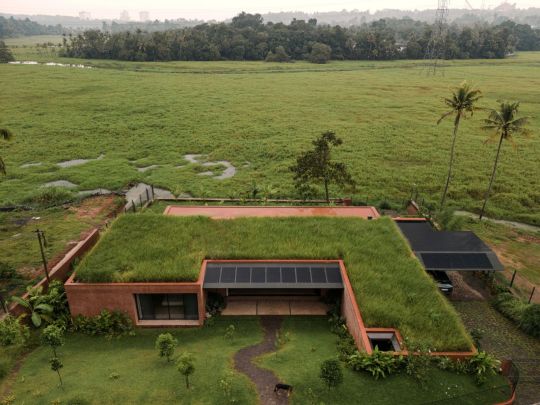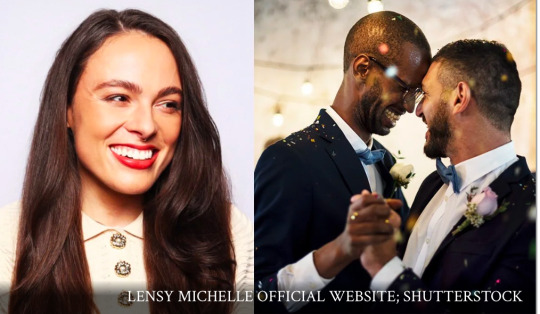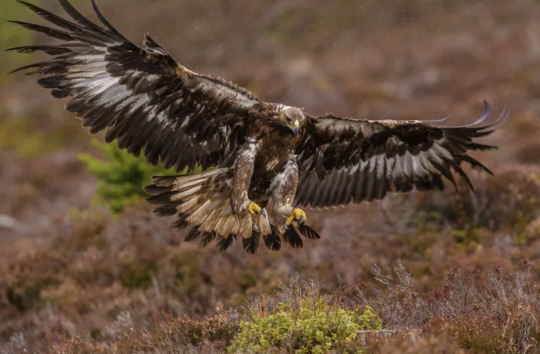#India solar energy
Explore tagged Tumblr posts
Text
There was record-breaking clean energy progress all around the world in 2024
"Last week, we shared the news that the U.S. government permanently closed most federal waters — more than 625 million acres — to offshore oil and gas drilling.
It’s a great way to kick off a year of more good climate action. And as the year-end data rolls in, there are even more stories of progress in fighting climate change via transitioning away from fossil fuels toward clean energy sources across the globe. In 2024...
📍 In Great Britain, wind power alone provided more electricity than ever before, and all renewables together generated around 56% of electricity.
📍 In Germany, renewables made up a record 59% of electricity generation and became the “backbone of the system” in the country.
📍 In Poland, a record 29% of its power came from renewable sources, showing great progress in a country that still heavily relies on coal.
📍 In India, the “transformative growth” of its renewable energy sector led to it surpassing 200 GW of installed capacity, making up 46% of the country’s total installed capacity.
→ Read more stories of progress for the planet"
-via GoodGoodGood, January 18, 2025, Source
#environment#climate#climate news#climate change#climate action#renewables#renewable energy#solar power#green energy#wind power#uk#united kingdom#germany#poland#india#europe#asia#good news#hope#hope posting
2K notes
·
View notes
Text
India needs to recall 80% "accelerated depreciation" in Wind Energy sector to show West who is the Best!!! | Bring all guns to the battle!
Until 2016 the Wind Energy sector had enjoyed accelerated depreciation (AD) of 80 per cent under the Income Tax Act. But in March 2016 (Budget) Indian govt reduced 80% depreciation to 40% depreciation. Wind Energy in India has barely survived since then. India needs to show the WEST that India can LEAD the world into Renewable Energy Transition What is Accelerated Depreciation?: Accelerated…

View On WordPress
#corporation depreciation and solar energy#depreciation on solar plant#depreciation on solar systems in india#Energy#energy transition in india#india renewable energy#india solar energy#india wind export#national offshore wind energy policy#potential of wind energy in india#promotion of wind energy#renewable energy#renewable energy india#Solar Energy#Wind Energy#Wind Energy India#wind energy india upsc#wind export india#Wind Power
0 notes
Text
#india#solar panels#solar energy#solar power#good news#environmentalism#science#environment#climate change#climate crisis
110 notes
·
View notes
Text













Alarine Earth Home, Koshi, India,
Zarine Jamshedji Architects Conceived in collaboration with builder Cornelis Alan Beuke
Photo Credit: Syam Sreesylam
#art#design#architecture#interior design#interiors#minimalism#earth home#india#koshi#alarine#zarine jamshedji#cornelis alan beuke#solar energy#sustainability#grassland#holistic#green roof
877 notes
·
View notes
Text
Dandelion News - December 1-7
Like these weekly compilations? Tip me at $kaybarr1735 or check out my Dandelion Doodles for 50% off this month!
1. These high-tech windows fight climate change – and will save you money

“[“Vacuum-insulated glass”] insulates five times better than double-paned glass. The Enthermal product line holds energy about as well as fiberglass wall insulation[…. T]he energy bill savings offset the upfront cost of the upgrade in two to seven years, depending on the building[….]”
2. Doulas test ways to curb Memphis’ Black maternal, infant deaths

“Research shows they are key to better health outcomes. […] Free of charge, [parents enrolled in this pilot program], in addition to being paired with a doula, get access to free yoga classes, diapers, breastfeeding starter kits, nutritious food and other tangible help that can measurably boost well-being.”
3. Scientists find feeding grazing cattle seaweed cuts methane emissions by almost 40%

“This is the first study to test seaweed on grazing beef cattle in the world. […] Most research to reduce methane emissions using feed additives has taken place in controlled environments with daily supplements. But Kebreab noted in the study that fewer than half of those methods are effective for grazing cattle.”
4. Success for local residents as Florida council toppled over sewage plant plan

“A citizens’ revolt in a small Florida city ousted an entire slate of councilors who were pushing for a new sewage plant to be built close to one of the state’s most pristine and treasured rivers.”
5. Beaver survey aims to show the urban benefits of Chicago's 'ecosystem engineers'

“Urban Rivers is installing [“artificial floating gardens”] along the river to restore native wetland habitats, which provide food and shelter for wildlife, as well as natural spaces for humans.”
6. The future of plastic: Biodegradable, durable, and even edible

“[… T]he composite plastic proved not only sturdy but also more malleable than its core component, hydroxyethyl cellulose. Additionally, since both cellulose and tyrosine are edible, the biodegradable composite plastic can technically be consumed.”
7. Limestone quarries could be vital for wild bee conservation

“Quarries provide valuable habitats for wild bees and other animals and plants that occur on the now rare calcareous grasslands," explains lead author Dr. Felix Kirsch[….]”
8. New England wedding vendors offer help to same-sex couples before Trump inauguration

“Marriage equality isn’t immediately at risk. Trump has said he considers it settled law, but of course it’s hard to take him at his word […] so vendors in the region are offering free or discounted services to queer couples and noncitizens in a rush to marry.”
9. The indigenous women saving India's endangered giant yams

“Since their formation in 2022, the 10 members of the Noorang group have planted and brought back to the community 180 varieties of wild tubers[….] The project is part of [… a] farming initiative to eradicate poverty, provide agricultural training and empower women in vulnerable tribal communities.”
10. The US is making and deploying more solar panels than ever before

“[… D]omestic solar module manufacturing capacity has nearly quintupled since 2022[….] Solar is the cheapest source of new power generation by far, and it’s an increasingly large employer in the U.S., particularly in Republican-led states.”
November 22-28 news here | (all credit for images and written material can be found at the source linked; I don’t claim credit for anything but curating.)
#hopepunk#good news#solar panels#solar energy#solar power#climate change#co2 emissions#cattle#seaweed#india#yams#food insecurity#beaver#habitat#conservation#bees#florida#civic engagement#new england#same sex marriage#gay marriage#marriage#us politics#plastic#science#home improvement#thermal insulation#parenting#perinatal#medicine
66 notes
·
View notes
Text
Leading Belize’s renewable energy movement within indigenous communities are three Maya women who are bringing solar power to their villages, transforming lives and fostering sustainable change.
Since 2016, Florentina Choco, along with sisters Miriam and Cristina Choc from the Toledo District, have been bringing solar power to remote, off-grid areas. Through the Small Grants Programme (SGP), managed by the United Nations Development Programme (UNDP), they underwent six months of solar energy training at Barefoot College International in India.

Cristina added that during installations, they teach local women how to install and maintain solar systems. “We train them… how to take care of their system,” she said.

As they gained experience, the women realised their skills were underutilised in their own villages. They are currently working in six villages, including Yalbac in the Cayo District.

32 notes
·
View notes
Photo

Solar energy in India
by LegendesCarto
60 notes
·
View notes
Text

Gujarat Solar Park, India
23 notes
·
View notes
Text
Why Solar Earthing is Essential for Your Solar Panel System
When you think about solar power, you probably picture sleek solar panels soaking up the sun, cutting down electricity costs, and promoting clean energy. But there’s one crucial element that often goes unnoticed—solar earthing. This unsung hero ensures your solar installation runs safely and efficiently for years.
In this blog, we’ll explore what solar earthing is, why it’s essential, and how it benefits both large solar power plants and smaller solar setups.

What is Solar Earthing?
Solar earthing, also called grounding, is the process of connecting your solar panel system to the earth using conductive materials like copper or galvanized steel. The goal? To safeguard your system and everyone around it from electrical faults or lightning strikes.
Solar panel systems generate electricity, and with that comes the risk of faults due to factors like harsh weather, aging equipment, or unexpected electrical surges. A well-planned earthing system safely directs any stray or excess current into the ground, preventing hazards.
Why is Solar Earthing Important?
1. Ensures Safety for Users and Equipment
Solar systems operate with high electrical loads. Without proper earthing, an electrical fault can lead to dangerous shocks, fires, or damage to your system. A solid grounding setup protects your investment and ensures safety for all.
2. Boosts Efficiency in Solar Power Plants
For large-scale solar power plants, even a minor electrical fault can lead to substantial losses. Solar earthing stabilizes voltage levels, preventing disruptions and maintaining optimal efficiency.
3. Meets Regulatory Standards
Many countries have strict regulations requiring proper solar earthing for installations. Compliance not only helps avoid legal penalties but also guarantees a longer-lasting and safer system.
How Does Solar Earthing Work?
A solar panel system consists of several key components, including:
Solar panels
Inverters
Batteries (for off-grid systems)
Mounting structures
A proper earthing setup connects all these components to the ground using a network of conductors. If an electrical fault or lightning strike occurs, the current safely disperses into the ground instead of damaging the system or posing risks.
Different Types of Solar Earthing
The type of earthing method depends on the size and type of the solar installation. Here are three commonly used methods:
1. Plate Earthing
A metal plate, typically copper or galvanized iron, is buried underground and connected to the system. This is a common method for small-scale residential solar panel setups.
2. Rod Earthing
Metal rods are driven deep into the ground to ensure effective grounding. This method is ideal for larger solar power plants due to its efficiency and ability to handle higher electrical loads.
3. Strip Earthing
Conductive metal strips are laid underground to create a broad earthing network. This method is used for installations requiring a larger grounding surface area.
Key Benefits of Proper Solar Earthing
Enhances the Lifespan of Solar Installations A well-grounded system protects against electrical surges, reducing wear and tear and extending the life of your solar panels.
Improves System Reliability By keeping voltage levels stable, solar earthing ensures uninterrupted performance—even during extreme weather conditions.
Reduces Maintenance Costs A properly earthed system lowers the risk of electrical damage, minimizing costly repairs and replacements.
Provides Peace of Mind Knowing that your solar system is safeguarded from electrical hazards lets you enjoy clean, renewable energy without worry.
Earthing in Large Solar Power Plants
For utility-scale solar power plants, effective earthing is even more critical. These expansive installations require robust earthing systems, often incorporating advanced techniques like lightning arresters, to handle high electrical loads and unpredictable environmental factors.
Challenges in Solar Earthing
Despite its importance, solar earthing faces a few challenges:
Poor Soil Conductivity – In areas where the soil doesn’t conduct electricity well, additional measures like moisture-retaining compounds may be needed.
Corrosion of Earthing Components – Over time, earthing rods and plates may corrode, especially in humid regions. Regular maintenance helps prevent this.
Incorrect Installation – Faulty installation can compromise safety and efficiency. Always rely on experienced professionals to set up your system.
Best Practices for Effective Solar Earthing
Use High-Quality Materials – Opt for durable conductors like copper or galvanized steel for long-term reliability.
Schedule Regular Inspections – Routine maintenance helps catch potential issues early and keeps your system running smoothly.
Follow Local Regulations – Adhering to safety and compliance guidelines ensures your solar installation meets industry standards.
Final Thoughts
While solar earthing may not be the most talked-about aspect of solar energy, it’s one of the most vital. Whether you’re installing a small residential system or a large solar power plant, proper grounding is key to ensuring safety, efficiency, and long-term performance.
By investing in a reliable earthing setup, you’re not just protecting your solar panels you’re ensuring a secure and hassle-free switch to clean energy.
#solar earthing#solar panels for home#best solar panel in india#solar energy#solar panel installation#solar panel system#rooftop solar panels
2 notes
·
View notes
Text
Solar Water Heater Incentives: Save Money While Saving the Planet
Unlocking Solar Water Heater Incentives: Save Money While Saving the Planet
Solar water heater incentives are revolutionizing how households and businesses think about energy consumption. With rising energy costs and increasing environmental awareness, transitioning to solar-powered systems has become more attractive than ever. This comprehensive guide explores various incentives available, their benefits, and how you can leverage them to reduce costs and environmental impact.
Why Solar Water Heater Incentives Matter
Switching to solar water heaters offers significant benefits, but the initial investment can be steep. Incentives make it more affordable by reducing upfront costs and improving long-term returns. Governments and private organisations are pushing these initiatives to encourage sustainable energy adoption, driving a greener future.
Benefits of Solar Water Heater Incentives
Cost Reduction: Incentives lower the high initial costs of solar water heater installation.
Energy Savings: Decreased reliance on electricity reduces monthly utility bills.
Environmental Impact: Reducing fossil fuel dependence cuts greenhouse gas emissions.
Tax Credits and Rebates: Enjoy financial rewards through government programs.
Types of Solar Water Heater Incentives
Solar water heater incentives vary across regions and sectors, targeting homeowners, businesses, and even non-profit organisations. Let’s dive into the most common types:
Solar Water Heater Incentives
1. Federal Tax Credits
Federal governments often provide tax credits for installing solar water heating systems. In the U.S., for example, the Investment Tax Credit (ITC) allows homeowners to deduct a percentage of the system cost from their taxes.
Key Feature: Covers up to 30% of installation costs.
Eligibility: System must meet specific efficiency standards.
2. State-Level Rebates
Many states offer rebates as an additional incentive. These rebates can significantly reduce installation costs and vary depending on the region.
Example: California’s Solar Thermal Rebate Program.
Tip: Check local energy department websites for details.
3. Utility Company Incentives
Several utility companies offer rebates or special rates for customers adopting solar water heating systems.
Example: Discounts on equipment or installation services.
Pro Tip: Contact your utility provider to explore options.
4. Grants for Non-Profits and Businesses
Non-profit organisations and commercial entities can benefit from grants aimed at promoting renewable energy adoption.
Noteworthy Program: U.K.’s Renewable Heat Incentive (RHI).
How to Apply: Submit a detailed proposal outlining energy savings.
5. Financing Options
Low-interest loans and leasing options make solar water heating systems more accessible. Some governments collaborate with financial institutions to provide these facilities.
Eligibility Criteria for Solar Water Heater Incentives
Understanding eligibility is crucial to maximising benefits. Here’s what you need to know:
Energy Efficiency Standards: Systems must meet local energy efficiency guidelines.
New Installations Only: Most programs do not cover retrofits.
Residential vs. Commercial: Separate incentives exist for each category.
Application Deadlines: Ensure timely submissions to avoid missing out.

Step-by-Step Guide to Claiming Incentives
Navigating the process of claiming solar water heater incentives can be daunting. Follow these steps for a hassle-free experience:
Step 1: Research Incentives in Your Area
Use online tools or consult local authorities to identify available programs.
Tip: Websites like DSIRE provide a comprehensive database of U.S. incentives.
Step 2: Choose the Right System
Ensure your chosen solar water heating system meets eligibility criteria for efficiency and quality standards.
Step 3: Hire Certified Installers
Work with licensed professionals to avoid disqualification from incentive programs.
Tip: Ask your installer about relevant certifications.
Step 4: Submit Your Application
Complete necessary paperwork and submit supporting documents, such as proof of purchase and installation.
Step 5: Monitor Approval and Reimbursement
Track your application status and follow up as needed. Reimbursements typically arrive within a few months.
Call : +91 9364896193, +91 9364896194 Jupiter solar to buy solar water heater
Top Programs Offering Solar Water Heater Incentives
1. Residential Renewable Energy Tax Credit (U.S.)
Covers 30% of installation costs.
Available for both primary and secondary residences.
2. Canada’s Greener Homes Initiative
Provides grants up to CAD 5,000.
Supports energy-efficient home upgrades.
3. Australia’s Small-Scale Technology Certificates (STCs)
Encourages renewable energy adoption.
Reduces upfront costs by offering tradable certificates.
4. European Union Renewable Energy Grants
Wide-ranging incentives under EU Green Deal.
Focused on reducing carbon footprints.
Common Misconceptions About Solar Water Heater Incentives
1. Too Complex to Apply
Many believe the process is overly complicated. In reality, most programs offer clear guidelines and support.
2. Limited Availability
Contrary to popular belief, incentives are widely available, covering diverse regions and sectors.
3. Only for Large Systems
Incentives cater to systems of all sizes, from residential to industrial setups.
Maximising Your Savings
To get the most out of solar water heater incentives, consider the following:
Bundle with Other Programs: Combine federal, state, and utility incentives.
Perform Regular Maintenance: Ensure your system operates efficiently to maximise savings.
Educate Yourself: Stay updated on new programs and eligibility changes.
Solar Water Heater Incentives
1. What is the average cost of a solar water heating system?
The cost typically ranges from $3,000 to $7,000, depending on system size and complexity.
2. How much can I save with incentives?
Savings vary but can cover 20-50% of total installation costs.
3. Are solar water heaters eligible for net metering?
No, net metering generally applies to solar photovoltaic systems, not solar water heating systems.
4. Can I apply for multiple incentives?
Yes, you can combine federal, state, and local incentives to maximise benefits.
Conclusion: Your Path to a Sustainable Future
Solar water heater incentives are a game-changer for anyone looking to adopt renewable energy. By reducing costs and offering financial rewards, these programs make sustainability more achievable for households and businesses alike. Take advantage of these opportunities to save money while contributing to a greener planet.
Ready to make the switch?
#solar water heater#solar energy#bangalore#india#solar#solar water heaters#solar water heating#bengaluru#solar heater#water#solar water heater incentives#solar energy benefits#renewable energy savings#federal tax credits#state rebates#utility company incentives#green energy#energy efficiency#solar water heater programs#sustainable living#solar water heating systems#eco-friendly energy solutions#tax credits for solar#solar incentives guide#renewable heat incentive#affordable solar options#save with solar#solar energy for homes#go green with solar#reduce energy costs
2 notes
·
View notes
Text
youtube
Correction:
At 3:24 minutes, the subtitle erroneously read as '...polling service station'. The corrected fact is that wind solar hybrid projects can be categorised into 'cooling service stations' where wind and solar power is connected and the power is stepped up from '33kv to 66kv (kilovolt)'.
We regret the inaccuracy and stand corrected.
Every week, Eco India brings you stories that inspire you to build a cleaner, greener and better tomorrow.
Wind-solar hybrid systems offer many advantages over their standalone counterparts. Gujarat in particular is investing in the technology. Could it help India cut fossil fuels? We check out the pros and cons of this emerging technology.
*********
Credits:
Supervising Producer: Nooshin Mowla
Field Producer: Aadya Baoni
Script: Jessica Goel
Video Editor: Sujit Lal
Director of Photography: Chinmay Deshpande
Producer: Ipsita Basu
Voiceover: Chandy Thomas
Executive Producer: Sannuta Raghu
#scroll.in#eco india#solarpunk#india#solar power#solar panels#wind power#wind turbines#clean energy#green energy#renewable energy#wind solar hybrids#Wind-solar hybrid systems#Gujarat#Youtube
4 notes
·
View notes
Text
Scientists have developed a new solar-powered system to convert saltwater into fresh drinking water which they say could help reduce dangerous the risk of waterborne diseases like cholera.
Via tests in rural communities, they showed that the process is more than 20% cheaper than traditional methods and can be deployed in rural locations around the globe.
Building on existing processes that convert saline groundwater to freshwater, the researchers from King’s College London, in collaboration with MIT and the Helmholtz Institute for Renewable Energy Systems, created a new system that produced consistent levels of water using solar power, and reported it in a paper published recently in Nature Water.
It works through a process called electrodialysis which separates the salt using a set of specialized membranes that channel salt ions into a stream of brine, leaving the water fresh and drinkable. By flexibly adjusting the voltage and the rate at which salt water flowed through the system, the researchers developed a system that adjusts to variable sunshine while not compromising on the amount of fresh drinking water produced.
Using data first gathered in the village of Chelleru near Hyderabad in India, and then recreating these conditions of the village in New Mexico, the team successfully converted up to 10 cubic meters, or several bathtubs worth of fresh drinking water. This was enough for 3,000 people a day with the process continuing to run regardless of variable solar power caused by cloud coverage and rain.
[Note: Not sure what metric they're using to calculate daily water needs here. Presumably this is drinking water only.]
Dr. Wei He from the Department of Engineering at King’s College London believes the new technology could bring massive benefits to rural communities, not only increasing the supply of drinking water but also bringing health benefits.
“By offering a cheap, eco-friendly alternative that can be operated off the grid, our technology enables communities to tap into alternative water sources (such as deep aquifers or saline water) to address water scarcity and contamination in traditional water supplies,” said He.
“This technology can expand water sources available to communities beyond traditional ones and by providing water from uncontaminated saline sources, may help combat water scarcity or unexpected emergencies when conventional water supplies are disrupted, for example like the recent cholera outbreaks in Zambia.”
In the global rural population, 1.6 billion people face water scarcity, many of whom are reliant on stressed reserves of groundwater lying beneath the Earth’s surface.
However, worldwide 56% of groundwater is saline and unsuitable for consumption. This issue is particularly prevalent in India, where 60% of the land harbors undrinkable saline water. Consequently, there is a pressing need for efficient desalination methods to create fresh drinking water cheaply, and at scale.
Traditional desalination technology has relied either on costly batteries in off-grid systems or a grid system to supply the energy necessary to remove salt from the water. In developing countries’ rural areas, however, grid infrastructure can be unreliable and is largely reliant on fossil fuels...
“By removing the need for a grid system entirely and cutting reliance on battery tech by 92%, our system can provide reliable access to safe drinking water, entirely emission-free, onsite, and at a discount of roughly 22% to the people who need it compared to traditional methods,” He said.
The system also has the potential to be used outside of developing areas, particularly in agriculture where climate change is leading to unstable reserves of fresh water for irrigation.
The team plans to scale up the availability of the technology across India through collaboration with local partners. Beyond this, a team from MIT also plans to create a start-up to commercialize and fund the technology.
“While the US and UK have more stable, diversified grids than most countries, they still rely on fossil fuels. By removing fossil fuels from the equation for energy-hungry sectors like agriculture, we can help accelerate the transition to Net Zero,” He said.
-via Good News Network, April 2, 2024
#water#water scarcity#clean water#saline#desalination#off grid#battery technology#solar power#solar energy#fossil fuels#water shortage#india#hyderabad#new mexico#united states#uk#united kingdom#good news#hope#aquifers
999 notes
·
View notes
Text
Top 10 Solar Module Manufacturers in India
#Top 10 Solar Module Manufacturers in Ahmedabad India#Best solar module manufacturers in Ahmedabad/Vadodara/Gujarat/India#Solar module prices in Ahmedabad/Vadodara/Gujarat/India#Solar module installation services in Ahmedabad/Vadodara/Gujarat/India#High-efficiency solar modules in Ahmedabad/Vadodara/Gujarat/India#Renewable Energy India#Solar Companies India#Solar Tech India#Sustainable Energy India#Green Energy India#Solar Innovation India#Clean Energy India#SolarCompanies AhmedabadIndia#SolarManufacturing India#SolarIndustry India#Solar PowerIndia
2 notes
·
View notes
Text
#india#good news#environmentalism#science#solar panels#solar energy#solar power#climate change#climate crisis
19 notes
·
View notes
Video
tumblr
Super affordable outdoor solar lights by Hardoll India.
Where Industry and Environment co-exist in harmony.
Buy Online > https://www.greenassets.in/post/super-affordable-outdoor-solar-lights-by-hardoll-india
3 notes
·
View notes
Text
Good News - April 1-7
Like these weekly compilations? Support me on Ko-fi! Also, if you tip me on here or Ko-fi, at the end of the month I’ll send you a link to all of the articles I found but didn’t use each week - almost double the content! (I’m new to taking tips on here; if it doesn’t show me your username or if you have DM’s turned off, please send me a screenshot of your payment)
1. Three Endangered Asiatic Lion Cubs Born at London Zoo

“The three cubs are a huge boost to the conservation breeding programme for Asiatic lions, which are now found only in the Gir Forest in Gujarat, India.”
2. United Nations Passes Groundbreaking Intersex Rights Resolution

“The United Nations Human Rights Council has passed its first ever resolution affirming the rights of intersex people, signaling growing international resolve to address rights violations experienced by people born with variations in their sex characteristics.”
3. Proposal to delist Roanoke logperch

“Based on a review of the best available science, the U.S. Fish and Wildlife Service (Service) has determined that the Roanoke logperch, a large freshwater darter, is no longer at risk of extinction. […] When the Roanoke logperch was listed as endangered in 1989, it was found in only 14 streams. In the years since, Roanoke logperch surveys and habitat restoration have more than doubled the species range, with 31 occupied streams as of 2019.”
4. Fully-Accessible Theme Park Reopens Following Major Expansion

“Following the $6.5 million overhaul, the park now offers [among other “ultra-accessible” attractions] a first-of-its-kind 4-seat zip line that can accommodate riders in wheelchairs as well as those who need extra restraints, respiratory equipment or other special gear.”
5. ‘The Javan tiger still exists’: DNA find may herald an extinct species’ comeback

“A single strand of hair recovered from [a sighting] is a close genetic match to hair from a Javan tiger pelt from 1930 kept at a museum, [a new] study shows. “Through this research, we have determined that the Javan tiger still exists in the wild,” says Wirdateti, a government researcher and lead author of the study.”
6. Treehouse Village: Eco-housing and energy savings

““The entire place is designed and built to meet the passive house standard, which is the most energy-efficient construction standard in the world,” says resident Wayne Groszko, co-owner of one of the units at Treehouse.”
7. 50 rare crocodiles released in Cambodia's tropical Cardamom Mountains

“Cambodian conservationists have released 50 captive-bred juvenile Siamese crocodiles at a remote site in Cambodia as part of an ongoing programme to save the species from extinction.”
8. The Remarkable Growth of the Global Biochar Market: A Beacon of Environmental Progress

“Biochar, a stable carbon form derived from organic materials like agricultural residues and forestry trimmings, is a pivotal solution in the fight against global warming. By capturing carbon in a stable form during biochar production, and with high technology readiness levels, biochar offers accessible and durable carbon dioxide removal.”
9. 'Seismic' changes set for [grouse shooting] industry as new Scottish law aims to tackle raptor persecution

“Conservation scientists and campaigners believe that birds such as golden eagles and hen harriers are being killed to prevent them from preying on red grouse, the main target species of the shooting industry. […] Under the Wildlife Management and Muirburn Bill, the Scottish grouse industry will be regulated for the first time in its history.”
10. White House Awards $20 Billion to Nation’s First ‘Green Bank’ Network

“At least 70 percent of the funds will go to disadvantaged communities, the administration said, while 20 percent will go to rural communities and more than 5 percent will go to tribal communities. […] The White House said that the new initiative will generate about $150 billion in clean energy and climate investments[…].”
March 22-28 news here | (all credit for images and written material can be found at the source linked; I don’t claim credit for anything but curating.)
#hopepunk#good news#lion#conservation#zoo#india#intersex#lgbt rights#human rights#fish#endangered#disability#accessibility#amusement park#tiger#big cats#extinction#extinct species#ecofriendly#affordable housing#energy efficiency#crocodiles#global warming#climate change#scotland#raptor#eagles#hunting#solar panels#solar energy
9 notes
·
View notes